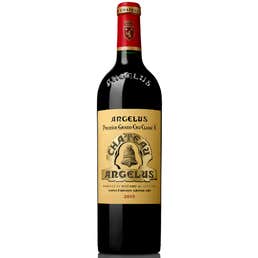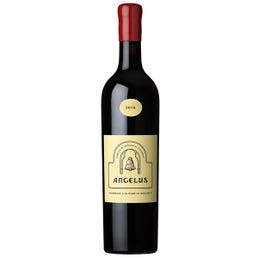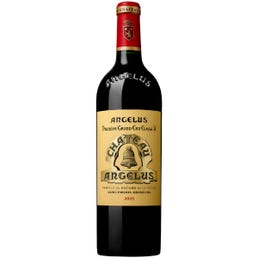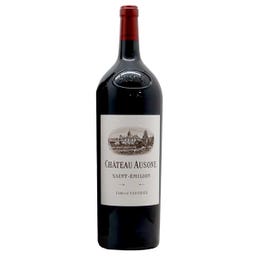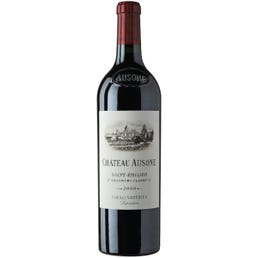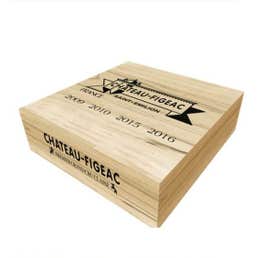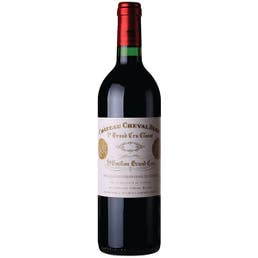Château Angelus Hommage a Elisabeth Bouchet 2019
• Domaine: Château Angélus
• Appellation: Saint-Emilion
• Classification: Saint-Emillian Grand Cru
• Origin: Right Bank, Bordeaux, France
A Tribute & A Love Story
Hommage à Elisabeth Bouchet is a tiny-production cuvée that will only be released in the greatest vintages. The first release comes from the already almost mythical 2016 vintage. It is made from old-vine Cabernet Franc (or Bouchet, as it has always been known on the right-bank) from two small parcels in the South-West corner of the Angélus vineyard on the famous pied de côte (the foot of the slope). The vines themselves are of 60-80 years of age, drawing the intense minerality that characterises the wine from the clay-limestone and clay-scree-limestone terroirs on which they are planted through their profound root-systems.
The wine honours Elisabeth Bouchet, great-grandmother of Stéphanie de Boüard-Rivoal, co-owner and CEO of Chateau Angélus – and it is inspired by a rather beautiful history. For it was to honour his beloved Elisabeth Bouchet that the vineyard of Angélus came to be so extensively planted with Bouchet (Cabernet Franc) by her husband, Stephanie’s great-grandfather, Maurice de Boüard de Laforest.
The 2019 vintage was aged for 22 months carefully. 80% was aged in exceptionally fine-grained new oak from the Vosges forest, 20% aged in large volume foudres. The production of this cuvée has been small from the beginning. There were just 9 barriques of the 2016, 5 of the 2018, and less than 5 of the 2019. No 2017 will be produced due to frost damage.
There are less than 800 bottles and a few larger format bottlings of the 2018, all offered in individual wooden cases.
The Château
On the label of every bottle of Château Angélus is the picture of a bell. This Saint-Émilion Premiere Grand Cru Classé A estate is situated in a natural amphitheater, surrounded by three local churches. The property’s namesake is derived from the close proximity to these spiritual houses of worship. During the harvest, vineyard workers can hear the church bells toiling while they tend to the vines. But there’s a deeper meaning to the symbol of the bell: it also represents the spiritual and priestlike devotion the eight generations of the Boüard family have to the vines at this property. The Boüard who currently runs the estate - Stephanie de Boüard-Rivoal - puts it best. She says, “We are only the guardians of a history that presided us and will survive us, so our role is to sustain it in the best conditions we are able to achieve.”
Château Angélus is one of the few estates in Bordeaux that has been run by the same family since its inception. The Boüard family has an even longer history than Château Angélus, as their legacy spans 700 years. Château Angélus was always a respectable property in Saint-Émilion, but once Hubert de Boüard took over after graduating from Bordeaux University and studying under the famed professor Émile Peynaud, quality skyrocketed. Throughout the generations, the Boüard family business was always deeply entrenched in the wine trade. So much, in fact, that one of the original names of Cabernet Franc was Bouchet, the maiden name of Hubert de Boüard’s Grandmother, Elizabeth Bouchet.
Admittedly, the quality of the wines at Château Angélus were underperforming in the early 1980s. But once Hubert de Boüard brought forth some revolutionary techniques from Burgundy, things started to change. Hubert made adjustments to the fermentation process, choosing to ferment whole berry in open top vats and conduct malolactic fermentation in small barrels instead. He made sure the estate would harvest parcel by parcel – like the vignerons of Burgundy did – and encouraged periods of ageing their wines on the lees. This would mean the wines would have more exposure to the yeast cells, yielding a creamier mouthfeel. Many estates have emulated Château Angélus’ viticultural techniques, and though these practices may seem commonplace today they were revolutionary at the time of introduction at the estate.
Stephanie de Boüard-Rivoal took over managing the Château Angélus in 2012, which was a very big year for the property. In 2012, Château Angélus was promoted to Saint-Émilion Premiere Grand Cru Classés A – the highest honor an estate can obtain in that part of the Right Bank. Since then, Stephanie has championed the transition of Château Angélus to organic viticulture. She is the third woman in the long line of Boüards to run the estate and has managed to move the property to 100% organic farming as of 2018. As of 2021, Château Angélus received its organic certification. Stephanie says the vineyards give her emotional and spiritual strength. She shares her ancestors’ devotion to crafting some of the most profound wines on the Right Bank.
Tasting Notes
“Produced from 100% old vine, Cabernet Franc, the aromas of smoked roses is what you initially notice before finding tobacco leaf, cherries, black raspberries, mint, menthol, and cigar box scents. The wine offers striking purity, similar to eating the berries off the vine. On the palate, the wine is supple, fresh, elegant, and refined, with silky textures, finesse, and depth. The red fruits continue expanding, taking on additional notes of herbs, tobacco, and cigar wrappers in the long, seamless finish. This is a benchmark wine for Cabernet Franc. 20% of the wine is aged in new, French oak barrels, with the remaining 80% aging in fourdres. Only 5 barrels were produced. Each bottle is packaged in its own, numbered box. 14.5% ABV, 3.7 pH." - Jeff Leve, The Wine Cellar Insider (7/14/2013), Ratings: 100, Drink: 2030-2055
| LWIN | 2104205 |
|---|---|
| Stock Status | In Stock |
| Appellation | Saint-Emilion |
| Vintage | 2019 |
| Brand | Château Angelus |
| Shipping Weight | 3.000000 |





